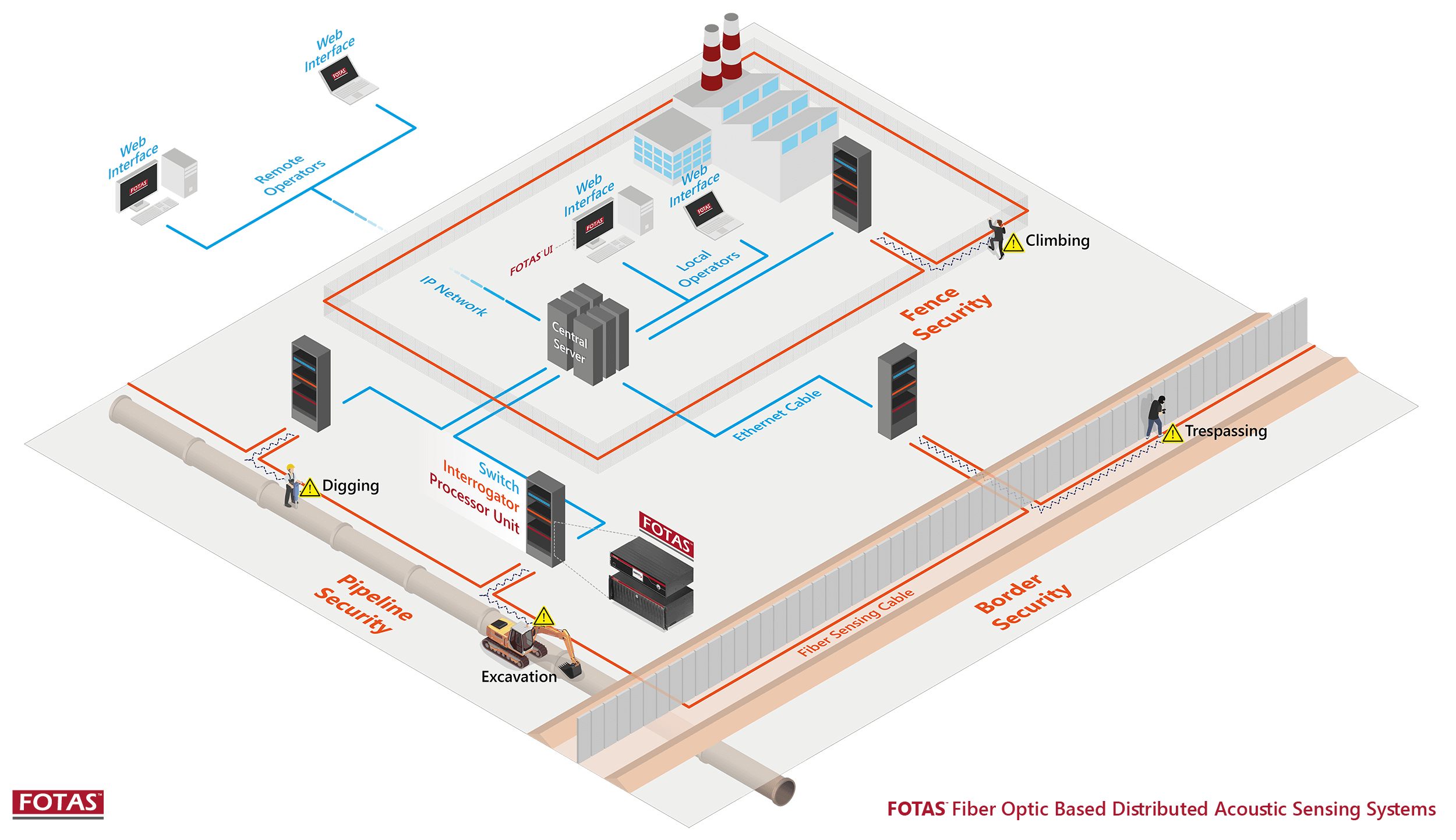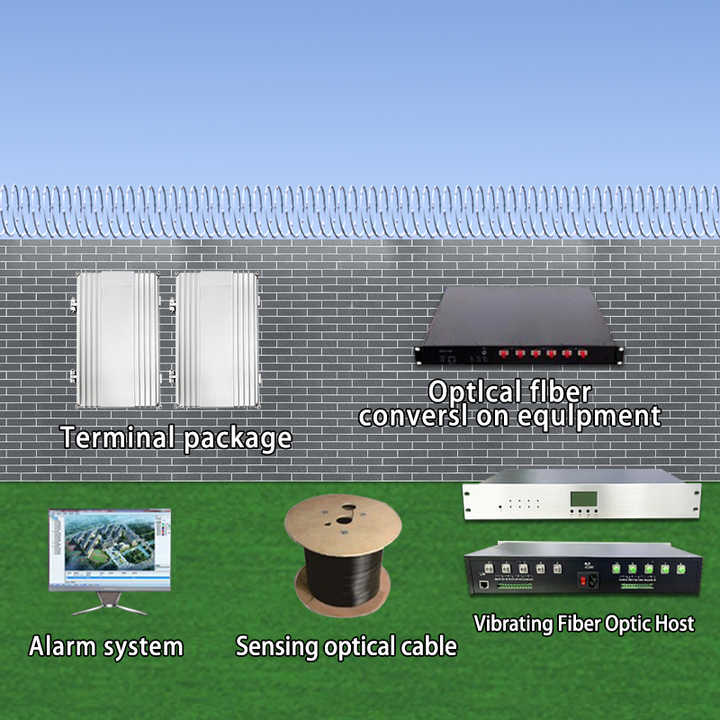Top Reasons to Choose a Fiber Optic Security System for Commercial Security Applications
Top Reasons to Choose a Fiber Optic Security System for Commercial Security Applications
Blog Article
The Ultimate Guide to Fiber Optic Security Equipments for Your Company
In an era where security concerns are paramount for services, comprehending the complexities of fiber optic modern technology can be transformative. This overview lays out exactly how incorporating fiber optic security systems not only boosts information security yet additionally offers benefits like resistance to interference and real-time monitoring capabilities.
Comprehending Fiber Optic Technology

The core of a fiber optic cord includes a thin glass or plastic center, bordered by a cladding layer that mirrors light back into the core. fiber optic security system. This style guarantees marginal loss of signal stamina, also over comprehensive distances. There are two key types of fiber optic wires: single-mode and multi-mode. Single-mode fibers are made for long-distance transmission, while multi-mode fibers appropriate for shorter ranges, usually utilized within structures.
Optical fiber are not only faster yet additionally a lot more protected than traditional circuitry. Their intrinsic resistance to electromagnetic interference and the difficulty of using the signal without detection make them a preferred selection for organizations prioritizing data honesty and safety. As companies progressively count on safe and secure and efficient interaction systems, understanding fiber optic modern technology comes to be vital for informed decision-making.
Key Advantages of Fiber Optic Protection
When taking into consideration protection options for an organization, the benefits of fiber optic systems are specifically engaging. Most importantly, fiber optic modern technology supplies phenomenal information transmission speeds and bandwidth capability, making it ideal for handling high-resolution video clip feeds from surveillance electronic cameras. This capability makes certain that protection personnel receive real-time information, enhancing total feedback times to possible protection hazards.
Moreover, fiber optic cable televisions are inherently resistant to electromagnetic disturbance, which can compromise the stability of traditional copper-based systems. This resistance makes sure that the data sent remains safe and secure and continuous, offering a much more trusted safety facilities. Furthermore, optical fiber are less vulnerable to physical damage, as they are made from glass as opposed to steel, minimizing maintenance expenses and downtime.
An additional considerable benefit is the boosted scalability of fiber optic systems. As service requirements develop, fiber networks can be conveniently expanded to fit extra safety and security devices without substantial overhauls to the existing infrastructure. Lastly, fiber optic systems provide boosted cybersecurity features, consisting of file encryption abilities that secure delicate information from unapproved access. Jointly, these advantages make find here fiber optic safety systems a durable selection for organizations seeking to boost their safety procedures.
Installation Refine and Considerations
Taking into consideration the complexities involved, the installment process of fiber optic safety and security systems calls for careful planning and execution. The initial step includes a detailed website assessment to determine optimum locations for cabling and devices. This evaluation must take into consideration ecological variables, existing framework, and potential vulnerabilities.

In addition, the installation must adhere to regional building codes and sector requirements. This may consist of coordinating with different stakeholders such as structure supervisors, IT teams, and safety workers to guarantee smooth combination with existing systems.
Post-installation, strenuous testing is essential to validate system performance and recognize any problems that might emerge. By focusing on these factors to consider throughout the installation process, companies can make certain a durable and reliable fiber optic safety and security system that satisfies their details security needs.
Newest Advancements in Fiber Optic Security
Recent developments in fiber optic innovation have considerably enhanced the abilities of safety and security systems for companies. One of the most significant innovations is the integration of fiber optic sensing units that can detect resonances and intrusions along the perimeter of a facility. These sensors read this give real-time tracking, enabling quick response to possible violations.
In addition, the advancement of dispersed fiber optic noticing technology enables the continuous monitoring of huge locations with a single fiber wire. This approach not just decreases installation costs but also boosts the dependability of checking systems by eliminating the demand for numerous, separate sensing units.
In addition, innovations in multiplexing techniques have allowed organizations to send vast amounts of information over fiber optic networks, boosting the abilities of video clip surveillance systems. High-definition video feeds can currently be sent over long ranges without loss of quality, making certain that safety and security workers have accessibility to clear and actionable info.
Last but not least, using expert system (AI) together with fiber optic systems is changing hazard discovery. AI algorithms can evaluate data from fiber optic networks to recognize unusual patterns or habits, enabling for aggressive protection actions. These developments collectively represent a significant leap ahead in fiber optic security innovation.
Picking the Right System for Your Business
Selecting the suitable fiber optic safety system for your organization is vital for making certain optimal defense and assurance. To make an enlightened option, assess your particular protection requirements, thinking about aspects such as the dimension of your facilities, the nature of your procedures, and potential vulnerabilities.
Begin by examining the level of security needed; for example, risky settings may demand advanced systems with incorporated security and intrusion discovery abilities. Next off, take into Source consideration scalability; as your service grows, your safety system ought to be capable of increasing to fit raised needs without considerable overhauls.
Furthermore, investigate the integrity and performance of various systems. Search for service providers with established track records and client testimonies that confirm to their service top quality. It's additionally advisable to ask regarding the modern technology's compatibility with existing facilities, guaranteeing a smooth assimilation procedure.
Conclusion
In conclusion, fiber optic protection systems provide a robust service for enhancing organization protection facilities. The newest developments additionally boost the effectiveness of these systems, ensuring that services stay safe and adaptable in an ever-evolving danger landscape.
Report this page